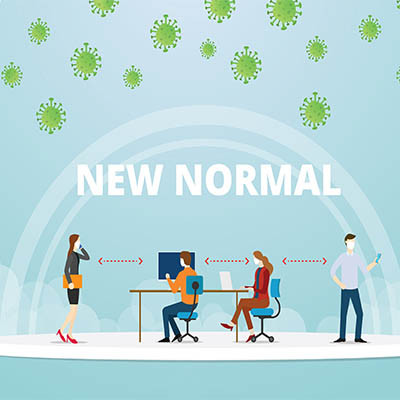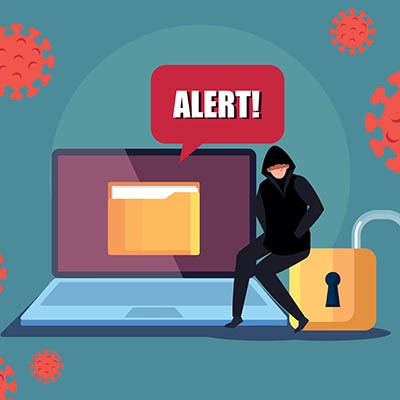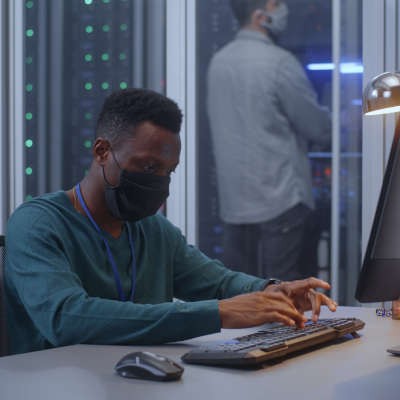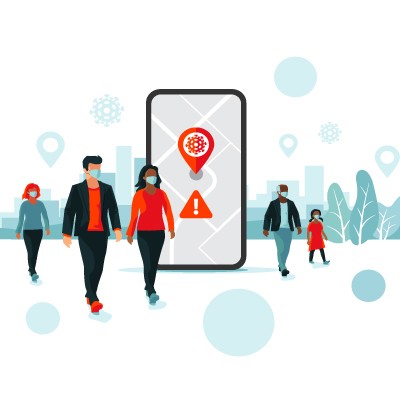With productivity being a massively important metric for every business, situations like the ongoing COVID-19 pandemic create a lot of fear and uncertainty; especially with businesses having to find new ways to go about doing things so that they can keep revenue coming in. This week, we thought we’d take a minute to look into how businesses have made it this far and how each element of a business has had to react to the ongoing crisis.
JensenIT Blog
With numerous vaccines now being deployed, it finally seems that there is an end to the COVID-19 pandemic at some point in the future. While we still have some ways to go, it would be helpful to look ahead and plan for how we can implement some of the lessons this period has taught us—especially in the workplace.
Keeping your network and infrastructure free from threats is always a priority, but with so many people working remotely, businesses have encountered problems doing so. In fact, hackers and scammers have come out of the woodwork to try and gain entry into unauthorized networks or to flat-out steal data. This month, we thought we would take a look at how the COVID-19 pandemic has exacerbated the threats out there.
Unfortunately, we are not yet rid of the concern of COVID-19 and the impact that it has had on business survivability. With “business as usual” requiring a few drastic adjustments to continue, it is important that small businesses are able and willing to embrace these changes. Research conducted by Salesforce presented in their fourth Small & Medium Business Trends Report shows that many businesses are seeing the importance of these changes.
The world isn’t the same as it was at this time last year. With months of question marks surrounding business, and with more people than ever searching for their place, companies have had to make some operational concessions that, if we were to assess the situation today, don’t seem to be going anywhere, anytime soon.
Many workplaces have started the processes necessary to safely return their employees to typical operations. However, this is going to involve no small amount of preparation in terms of your business’ technology and proactive planning. Let’s consider the different approaches that you could take as you resume operations in a way that helps protect your team while still enabling work to be done.
This year hasn’t been easy for anyone. Many businesses have closed, some have reduced their workforces, some have pushed their employees to work long hours from home. Regardless of your current position, you have to make efforts to keep the lifeblood of your business, your staff, engaged to keep turnover from becoming a major problem. This month, we thought we would look at the current situation and give a couple of examples of how you can keep from alienating your employees.
In a rare turn of events, Google and Apple have teamed up with local governments to help slow the ongoing spread of COVID-19. How would you like an app that could notify you if someone you had been in proximity to had tested positive for COVID-19? As useful as this collaboration could be to staunching the pandemic, many people are in uproar about it, and have begun to spread misinformation.
We’ve all been affected one way or another by the COVID-19 pandemic. Small businesses have been some of the hardest hit, as many were not deemed to be essential and were forced to close. Some were able to work from home. Regardless of what your pandemic strategy was, businesses are opening for business, and we thought it would be a great opportunity to discuss what to expect from your staff during this confusing time.
COVID-19 has every business on edge and looking for ways to cut some costs without directly affecting their ability to put out the product or service that their customers expect. When you begin to look at your IT, and try to establish what your IT support costs are, you may find that you are paying a lot more than you might like to keep your business’ IT running right. This is where managed IT services come in.
As businesses of all kinds either actively reopen or find themselves swiftly approaching that point, the ongoing status of COVID-19 guarantees that these organizations must carefully evaluate how to proceed. With numbers rising at the time of this writing, it is important that you establish the means to protect your employees from infection and illness.
With COVID-19 creating an unsure situation for so many businesses, and by extension their employees, these employees are suddenly finding themselves in a vulnerable position. Regardless of whether or not your employees are able to come into the office right now, it is important that you share the following information with them, as it may help to keep them out of a tough spot.
With the COVID-19 crisis far from over, many businesses have had their attention pulled away from their cybersecurity needs by the concerns that the current health crisis has generated. Here, we’ll be reviewing some of the observations that a group of 273 cybersecurity professionals have made, courtesy of an annual survey.
Many small businesses in the United States—most, actually—are in a catch-22 of sorts due to the COVID-19 pandemic. While reopening too soon could contribute to a resurgence in infection rates, there is also a very real risk associated with reopening too late. To help avoid either scenario, the right technology solutions will prove to be indispensable.















